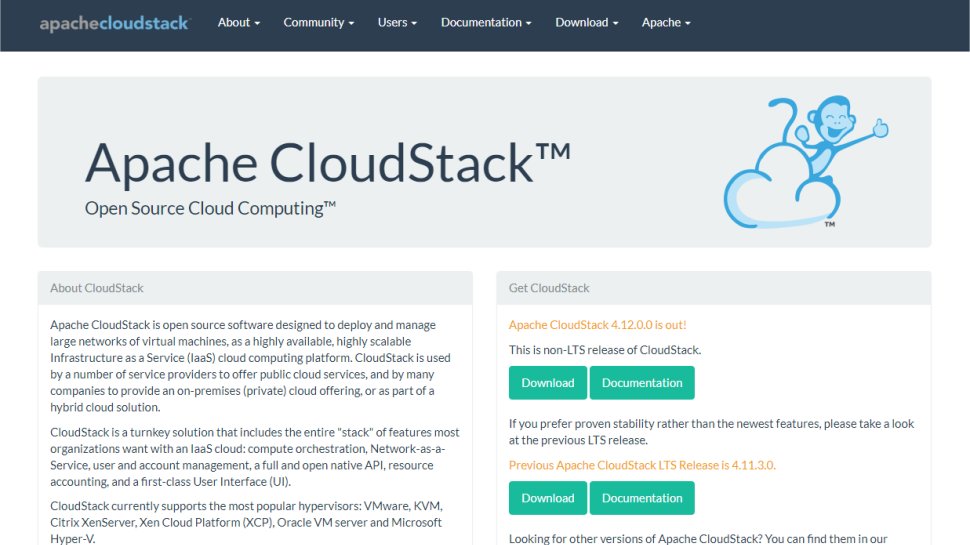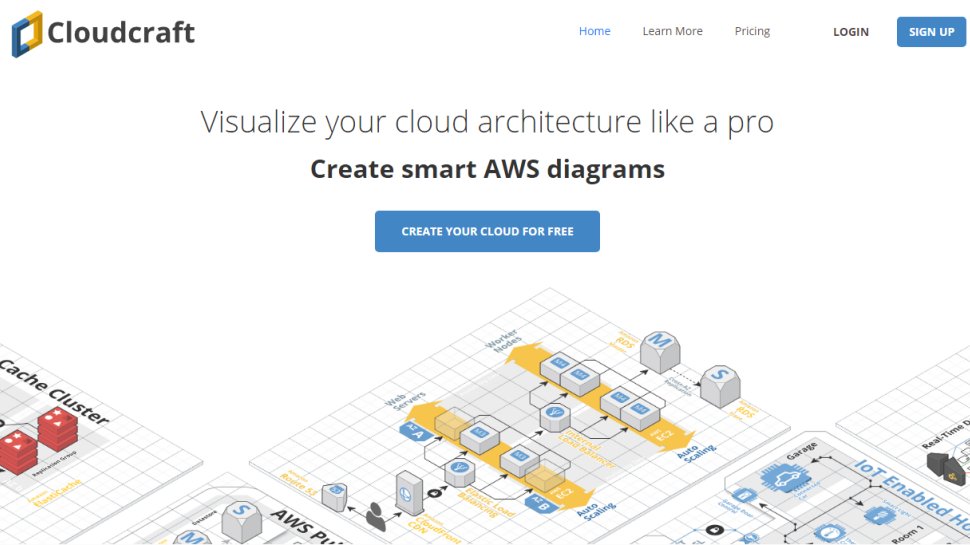Cloud software is fast become an essential component in any business IT environment, with the ability to host data and run applications, as well as monitor performance and control security more easily.
However, while there are a large number of providers offering customizable solutions, you can build you own cloud or hybrid cloud so long as you have the know-how, allowing you more control over your digital assets.
This means having more choice over which cloud services you want to use, not least from AWS, Azure, and others. Additionally, major integrations are usually available with VMware, Citrix, and other often essential computing applications.
Ultimately, the cloud management software you choose will allow for greater personalization for the demands of your businesses, ensuring that the software fits your needs, rather than the other way around.
Here then are the best in cloud management software, featured in no particular order.

Apache CloudStack is an open-sourced cloud computing company which creates, manages and deploys infrastructure cloud services.
The software is designed as highly scalable Infrastructure as a Service. The cloud platform is used to deploy and manage large networks of virtual machines. It’s designed for use by companies which offer on-premise cloud or hybrid solutions.
Apache CloudStack supports VMware, KVM and Citrix XenServer amongst others. It is a turnkey solution which includes compute orchestration, Network as a Service, account management, open API and resource accounting.
Users manage their cloud through a user-friendly interface. This gives users access to command line tools and/or RESTful API. Users utilize all compute, networking, software and storage resources from the API.
CloudStack’s API is compatible with AWS EC2 and S3. This is a handy feature for those who wish to deploy hybrid clouds.
The platform controls storage for instances running on hypervisors (primary storage) as well as templates, snapshots and ISO images (secondary storage).
Users have noted that CloudStack is not entirely customizable compared to other open source providers.

Cloudcraft users can design and visualize professional architecture diagrams.
The platform is optimized for Amazon Web Services. This means that users can create services with key components for EC2, Lambda, RDS, DynamoDB, CloudFront and Route 53 amongst others.
Subscribers can click on each component to view the current cost and configuration. Users also have easy access to the Amazon web console.
Cloudcraft allow users to collaborate on projects. You can drag and drop files into diagrams and AWS resources.
User’s components stay connected after being imported. They display more data including health and status information.
The platform creates information about the drawn cloud infrastructure along with data imported.
The ‘Free’ tier includes a single user, advanced AWS architectures, export, share, cost calculations and the ability to document your design.
The ‘Pro’ package is $49 per user per month. This incorporates all the free tier has to offer plus an infinite grid, live AWS sync, unlimited AWS accounts, team collaboration, 2-factor identification and priority support.
The ‘Enterprise’ package also includes customized support, volume licensing and GovCloud support. Users need to contact the sales team directly for a quote. There is also a free trial.

OpenStack is a free and open source software platform for cloud computing. It is usually deployed as an infrastructure as a service (Iaas).
The software is designed for creating private and public clouds. Users can control compute, storage and networking resources throughout a datacenter. This is managed from either a dashboard or through OpenStack’s API.
OpenStack Compute (NOVA) is a cloud computing fabric controller which is designed to manage and automate pools of resources. It works with bare metal configurations, virtual machines and containers. It integrates with legacy systems and third-party technologies.
OpenStack Identity (Keystone) is a directory of users linked to accessible OpenStack services. Keystone supports multiple forms of authentication such as password credentials and web service logins.
OpenStack works with many open source technologies. This makes it suitable for heterogeneous networks. The platform can automate all important processes such as workload provisioning, application lifecycle, networking, storage and container infrastructure.
Some reviewers have complained that OpenStack documentation is not very comprehensible.

ServiceNow is a cloud computing company which was founded in 2004. The solution offers a standard operating approach to hybrid and public clouds. It is geared towards medium to large businesses.
All user activity is managed through the Cloud User Portal. Users can access information on cost, quota, usage and health of their resources from here. They can also order new services, send requests and monitor incidents affecting resources.
ServiceNow Cloud Management provides on-demand access to multi-cloud resources which is fully automated. The portal creates dashboards for every employee such as the cloud administrator, designer and operator.
The platform encodes organization governance policies. This ensures that the correct level of controls are applied in resource placement, resource selection and naming convention.
Users need to contact ServiceNow directly for more information and a quote.

ManageEngine is an asset management tool. It was released in 2007.
The Application Manager offers a single integrated performance monitoring tool. Users can manage datacenters, applications, databases and systems. It is geared towards small to medium sized companies.
Users can monitor end user, web servers, virtual systems and cloud resources. The platform can scale up to 500 applications.
Users can view relationships between applications and databases using the application discovery and dependency-mapping tools. This information updates as the application changes.
The Applications Manager also allows users to track response times, view the performance of code segments, SQL statements and detect slow transactions.
Users can track over 100 key performance indicators of your apps such as memory utilization, resource availability and response time.
Users can request a personalized demo through their website. Potential subscribers need to contact ManageEngine for more information and to get started.
Other cloud management software to consider
AppFormix is an application management and cloud orchestration platform that aims to simplify operations and make them more effective through visualization of both virtual and physical environments. Users are able to monitor performance baselines to ensure performance optimization through real-time monitoring using the Junos Telemetry Interface and OpenConfig.
Cloud Lifecycle Management by BMC provides automated provisioning, governance, and management of secure cloud services. The platform provides self-service access to deploy applications tacks across multiple cloud environments. The entire system is intended to be simple to set up, with easy streamlining to run applications in either a test or production environment.
MultiCloud provides a dashboard through a web application for managing files across multiple clouds. MultiCloud offers a directory tree that works like Windows Explorer, making it easy to transfer files into different locations. You can also sync different clouds and leave the process to run automatically. There’s a Freeware plan available, and a Premium one with more features that costs $9.90 per month.
DivvyCloud offers a product more focused on managing security, compliance, and governance in cloud environments. It does this through a single interface which allows management and active policy enforcement over multiple clouds, whether public or private, and is compatible with AWS, Azure, Google, Alibaba, and Kubernetes, among others.
Red Hat Cloudforms uses open source technology to provide management tools for virtual and private cloud infrastructure, which allows for automation of standard processes, visualization for analysis, compliance control and user self-service abilities. It also aims to make it easier to manage diverse IT infrastructure with a focus on virtualization, along with deploying containers in the cloud to maximize efficiency.



